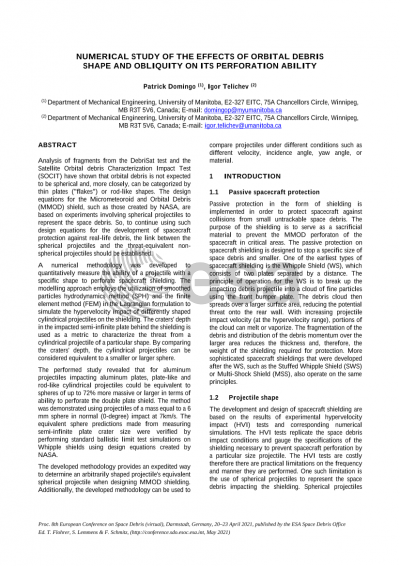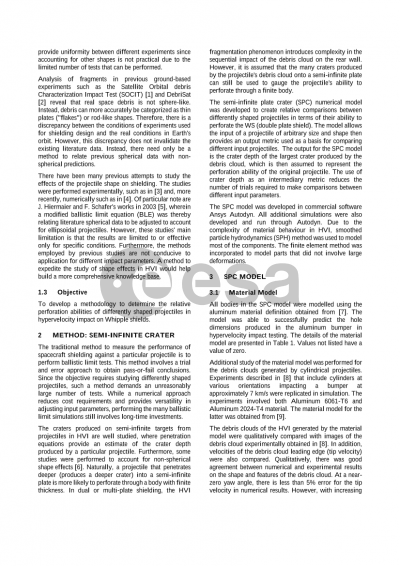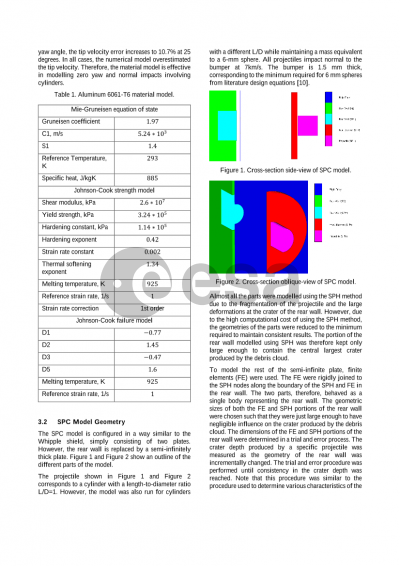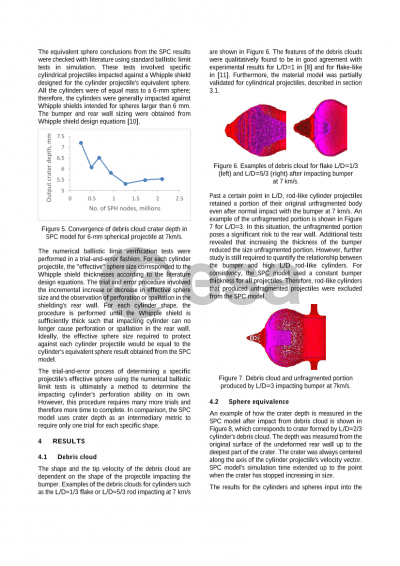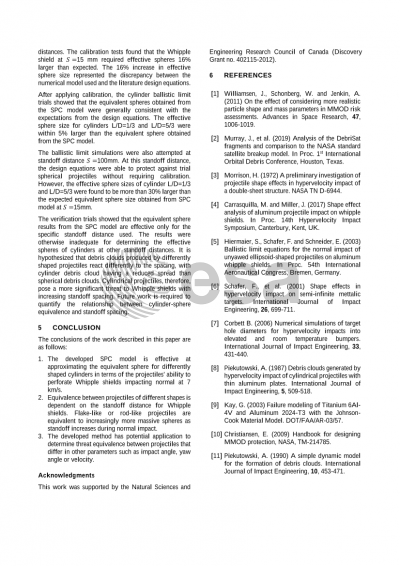Document details

Abstract
Analysis of fragments from the DebriSat test and the Satellite Orbital debris Characterization Impact Test (SOCIT) have shown that orbital debris is not expected to be spherical and, more closely, can be categorized by thin plates ("flakes") or rod-like shapes. The design equations for the MMOD shield, such as those created by NASA, are based on experiments involving spherical projectiles to represent the space debris. So, to continue using such design equations for the development of spacecraft protection against real-life debris, the link between the spherical projectiles and the threat-equivalent non-spherical projectiles should be established.
A numerical methodology was developed to quantitatively measure the ability of a projectile with a specific shape to perforate spacecraft shielding. The modelling approach employs the utilization of smoothed particles hydrodynamics method (SPH) and the finite element method (FEM) in the Lagrangian formulation to simulate the hypervelocity impact of differently shaped cylindrical projectiles on the shielding. The craters' depth in the impacted semi-infinite plate behind the shielding is used as a metric to characterize the threat from a cylindrical projectile of a particular shape. By comparing the craters' depth, the cylindrical projectiles can be considered equivalent to a smaller or larger sphere.
The performed study revealed that for aluminum projectiles impacting aluminum plates, plate-like and rod-like cylindrical projectiles could be equivalent to spheres of up to 60% more massive or larger in terms of ability to perforate the double plate shield. The method was demonstrated using projectiles of a mass equal to a 6mm sphere in normal impact at 7km/s. The equivalent sphere predictions made from measuring semi-infinite plate crater size were verified by performing standard ballistic limit test simulations on Whipple shields using design equations created by NASA. The tests of cylindrical projectiles impacting Whipple shields designed for the specific projectile's equivalent sphere were found to be consistent with the design equations with a 5% error in diameter.
The developed methodology provides an expedited way to determine an arbitrarily shaped projectile's equivalent spherical projectile when designing MMOD shielding. Additionally, the developed methodology can be used to make comparisons between projectiles under different conditions such as different velocity, incidence angle, yaw angle, or material.
Preview
